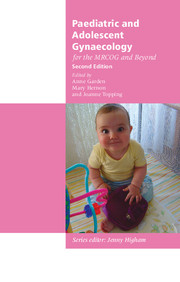Book contents
9 - Female genital mutilation
Published online by Cambridge University Press: 05 July 2014
Summary
Female genital mutilation is a complex area that raises issues of competing cultural backgrounds, autonomy, health, education and sexuality. Only the medical aspects of female genital mutilation as they relate to teenagers will be considered in this chapter.
Background
Female genital mutilation is practised in many cultures, most frequently in a belt of 28 African countries, with some occurring in the Middle and Far East. With prevalence rates as high as 98% in some countries (Sudan, Somalia), it is estimated that 200 million women are affected. With an increase in migration, female genital mutilation is now encountered in Europe, USA and Australia. While it is most widely associated with the Muslim culture, there is no reference to the practice of circumcision in the Koran. Incidences of the practice in non-Muslim cultures, such as Ethiopian Jews, have been reported. World Health Organization figures suggest that two million women and children have the operation performed every year.
The age at which female genital mutilation is performed varies from culture to culture. In some areas it is carried out at birth. In some parts of Nigeria, it is the custom for the procedure to be performed during the woman's first pregnancy. Most commonly, however, it is carried out in girls before puberty. Immigration figures show that the number of women from communities that traditionally practice female genital mutilation is rising in the UK.
- Type
- Chapter
- Information
- Publisher: Cambridge University PressPrint publication year: 2008

